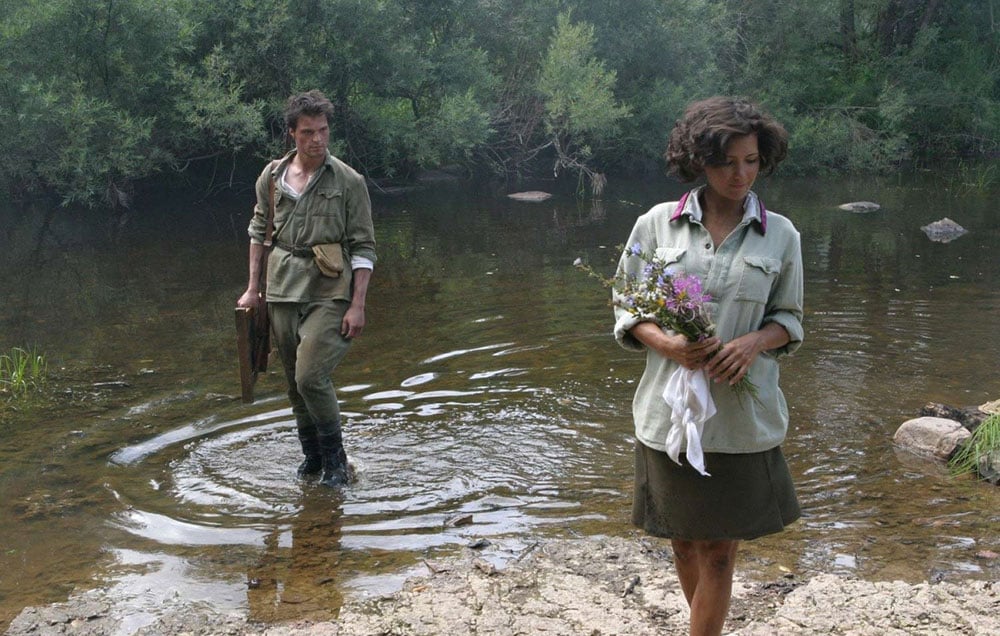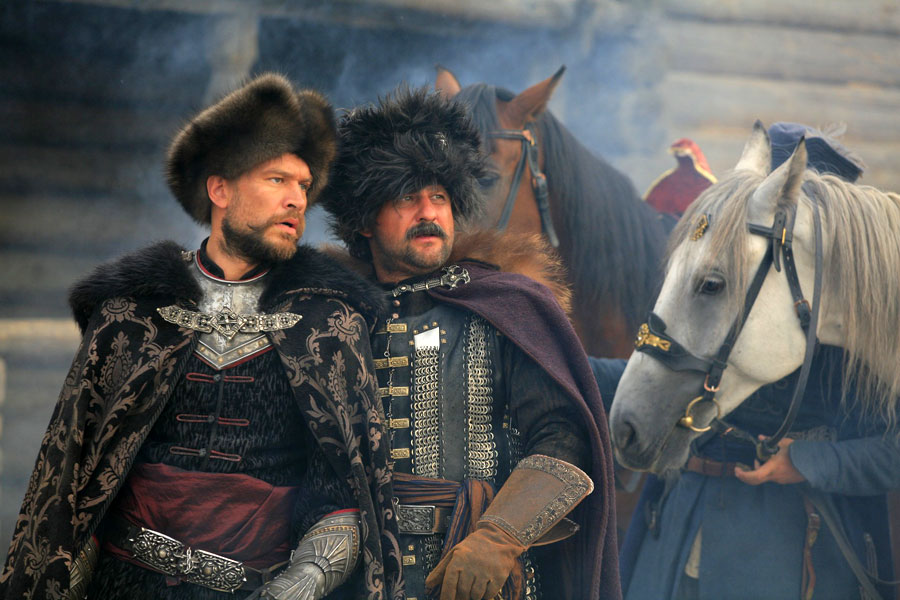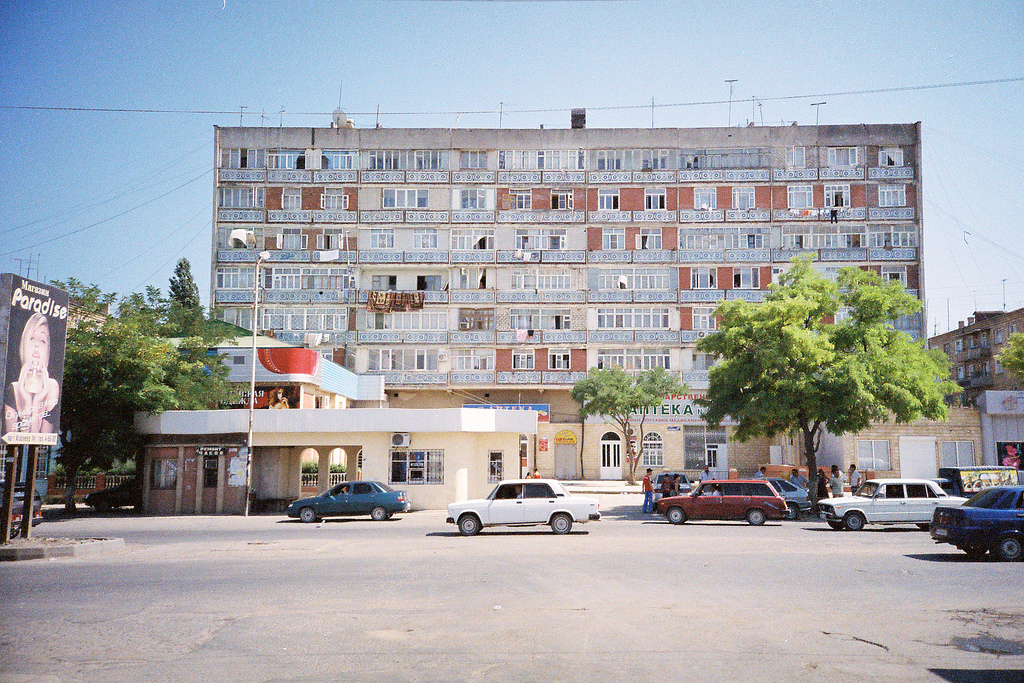Homeland insecurity: Sochi, migrants and the problem of Cossack identity
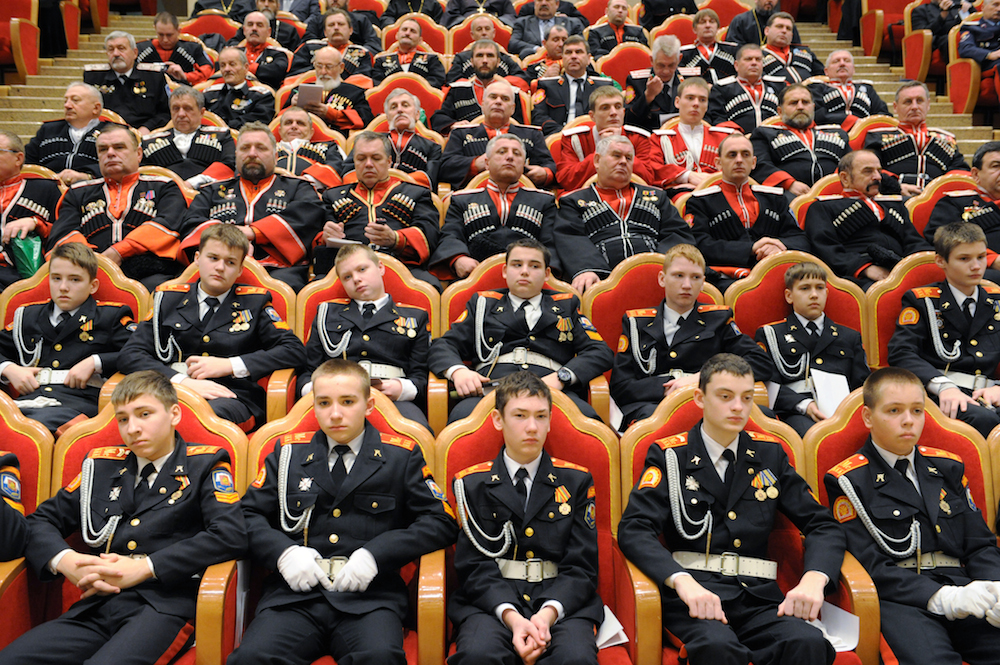
Russia's Cossacks have a rich history and controversial present. As Cossack groups patrol for migrants in Sochi and shut down plays in St Petersburg, anthropologist Anton Popov examines the identity crisis at the heart of the Cossack revival
Of the many surprises for western visitors to Sochi — palm trees, sunshine, double toilets — perhaps the most interesting are the bands of Cossacks who patrol the streets in traditional dress.
The costumes and militarised air of these patrols, which have been much commented on in the media, recall the traditional role of Cossacks as a semi-independent nation within a nation in the Russian borderlands, equally devoted to their own customs and defence of the motherland. Their role in the Winter Games is, however, evidence of a new chapter in their history: the post-Soviet revival which has seen Cossacks return to the streets — and to newspaper headlines.
In recent years neo-Cossacks have become notorious for their protests against exhibitions, plays and cultural events which they consider to be at odds with Russian Orthodox values and the traditional Cossack “virtues” of political and social conservatism, xenophobic nationalism and violent intolerance of all minorities. In 2012 a staging of Lolita in St Petersburg was cancelled after threats from Cossack groups who considered it to be propaganda for paedophilia. The same charge was laid against a performance of Death in Venice in the same city a year later; again, the response was violent threats and vandalism.
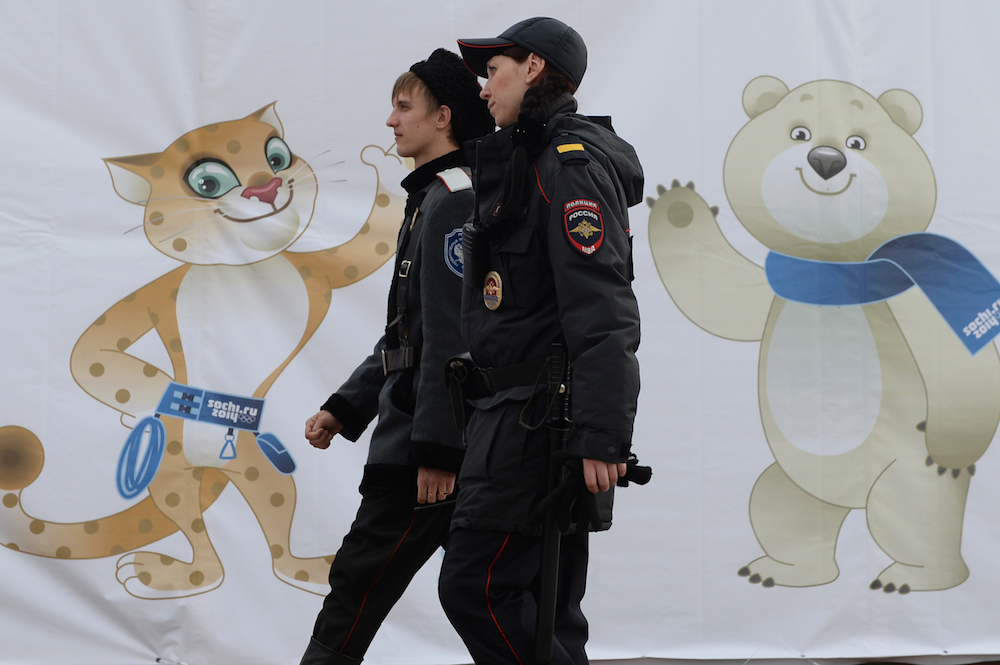
A Cossack joins a police officer on patrol in Sochi. Photograph: Maxim Bogodvid/RIA Novosti
Nor is it only perceived sexual misdemeanours that anger self-proclaimed Cossack groupings. In Moscow in March of last year Cossacks, alongside immigration officers and Orthodox activists, interrupted a performance of a play about the trial of Pussy Riot, staged by Swiss director Milo Rau, on the pretext that Rau did not have a valid work permit. In August, a group of Cossacks attacked musicians from American punk band Bloodhound Gang in the airport after they were accused of desecrating the Russian flag at a gig in Odessa, Ukraine.
“Who are these people justifying acts of violence with narratives of morality?”
Cossack interest in defending culture is still a relatively new phenomenon. But violence perpetrated by groups that define themselves as Cossacks dates back to the early Nineties, when there were pogroms against ethnic minorities and migrants in southern Russia. (This is not to mention the well-known role of Cossack troops in pogroms in tsarist and revolutionary times.) So who exactly are these people in uniforms justifying acts of violence with narratives of morality and border protection? Who are the Cossacks?
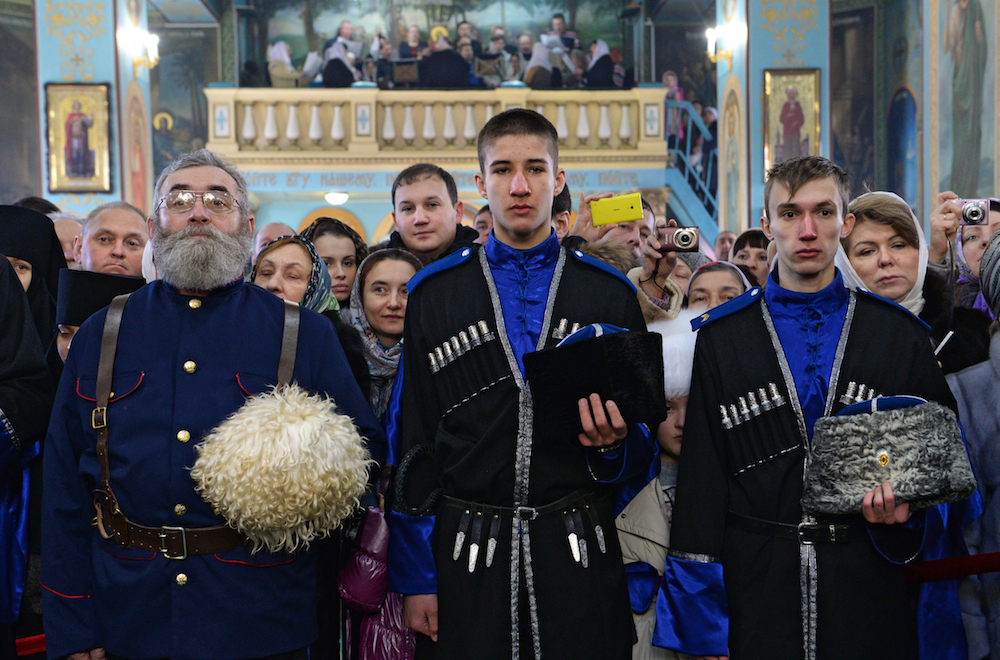
Cossacks at a church service in Volgograd. Photograph: Sergey Pyatakov/RIA Novosti
My own experience of contemporary Cossack identity is both professional and personal. As someone who grew up in the Krasnodar region — a traditional Cossack heartland known as the Kuban — in a family which cherished their Cossack origins, I have first-hand experience of these identity issues. As a teenager in the early Nineties I was even a member of a Cossack organisation for a few months. Latterly, as a sociologist of cultural and ethnic identity, I have been studying the Cossack revival since the late Nineties, constantly asking my subjects, and myself: how can an identity rooted in Russia’s imperial past be so successful in the 21st century?
“Cossack identity came to be constructed from private and intimate family memories rather than the public and collective domain”
The Cossack revival movement has to be seen within the particular context of the special relationship between the Russian state and the Cossacks. Historically speaking, Cossacks maintained a particular cultural, if not ethnic, identity thanks to their status as a semi-privileged estate within the quasi-feudal administrative system of the Russian empire, playing an important role in its colonisation project since the time of Ivan the Terrible. The Cossack regions stretched along the empire’s borders and, as in similar frontier societies, people of different ethnic origin were incorporated into Cossack communities.
This privilege was stripped from them after the 1917 revolution and subsequent Civil War, in which the majority of Cossacks supported the losing side — the monarchist Whites — against the Red Army. More Cossack lives were lost as a result of the Bolshevik policies of dekulakisation (the persecution of rich peasants) and collectivisation, and then in World War Two.
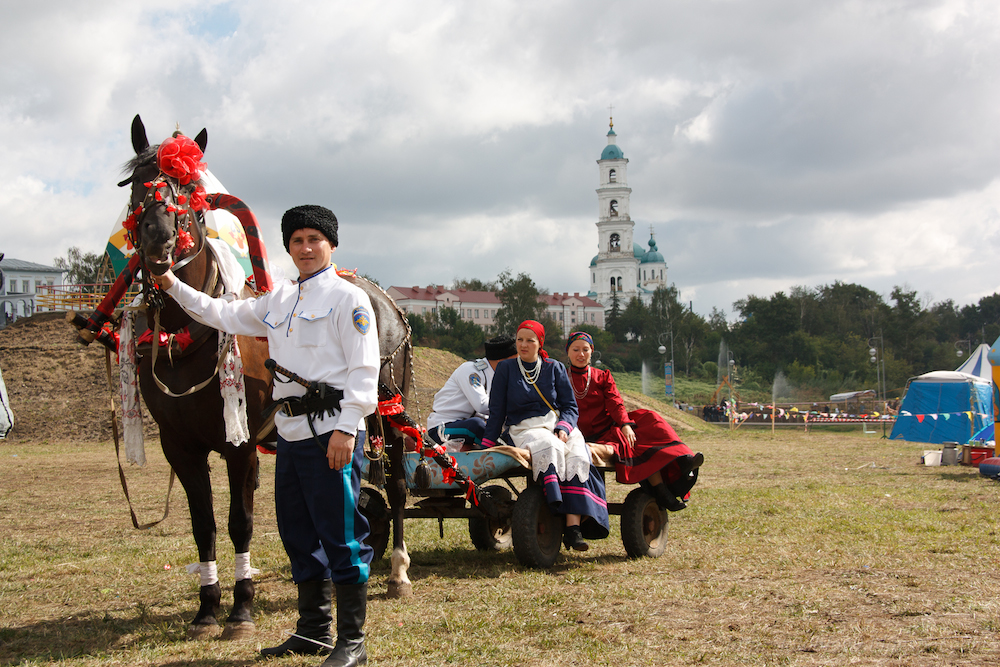
Cossacks at Spasskaya Fair, Yelabuga, Tatarstan. Photograph: Victor Lyubimov under a CC licence
After the war the Cossack population was recognised as a distinct people (albeit one without any territorial autonomy); by the late Soviet period, Cossack symbols had became emblems of the local past, manifested in films, novels and the work of folklore ensembles. As a consequence, for many ordinary citizens in the late Soviet period Cossack identity came to be constructed from private and intimate family memories rather than the public and collective domain. Cossack identity thus acquired more cultural characteristics and lost its political, military and economic functions.
The “cultural turn” in Cossack life preceded the collapse of the USSR, but it has determined the nature of the subsequent post-Soviet revivalist movement. For example, in Krasnodar region, an ethno-political Cossack revivalist movement has been increasingly prominent in the area since 1989. But, although the leaders of the modern Cossack movement claim its succession from the historical Kuban Cossack host, only a minority of local residents of Cossack origin participate in this movement, and not all members of today’s Cossack organisations have Cossack ancestors.
“Cossack organisations campaigned for the introduction of a specific Cossack category in the census”
The result is a split between two different visions of Cossack identity. Some contemporary Cossack organisations will welcome into their group any male candidate that is Slavic, or at least Orthodox, and has a Cossack “state of mind”. The opponents of this approach insist that Cossacks are a distinct ethnic group and that “Cossack roots” are a prerequisite.
These different approaches came to a head during the 2010 census in which “Cossack” was listed as a sub-group of “Russian”. A number of Cossack organisations and prominent individual activists campaigned for the introduction of a specific Cossack category. Rostov-on-Don rap band Ataman Palace had a minor hit with their song, Nationality Cossack, in which men and women of different ages and social backgrounds rap about the glorious past that they were forced to forget, about Soviet persecutions and about their distinct cultural heritage.
Nationality Cossack by Rostov-on-Don rap group Ataman Palace
One of the subjects of my research — let’s call him Daniil — told me that his “genetic memory” was not only a source of his Cossack identity but also allowed him to develop the military and martial art skills needed to defend the Church and the Motherland. This emphasis on physical training helps to socialise young people into the mnemonic community of Cossackdom.
Cossack groups are in a paradoxical position: they are most often registered as non-governmental organisations, but to be recognised as an official Cossack group they must be listed on the official register introduced by former president Boris Yeltsin in 1998. “Registered” Cossack organisations enjoy financial and organisational support from the authorities including the special presidential Council for Cossack Affairs established in 2009.
“Leonid saw street-patrols and crime-prevention — mostly aimed against non-Russians — as a ‘real cause’ for Cossacks”
The connection between Cossackdom and power runs deep. All the deputy governors of Krasnodar region since 1997 have been Cossacks, appointments which have coincided with the use of Cossack paramilitary organisations to pursue anti-migrant policies. In a controversial speech in August 2012, governor Alexander Tkachev cited the danger of ethnic expansion into Russia from the Caucasus and called for the support of Cossack paramilitary groups. His initiative won wide support and official Cossack patrols began all over Russia.
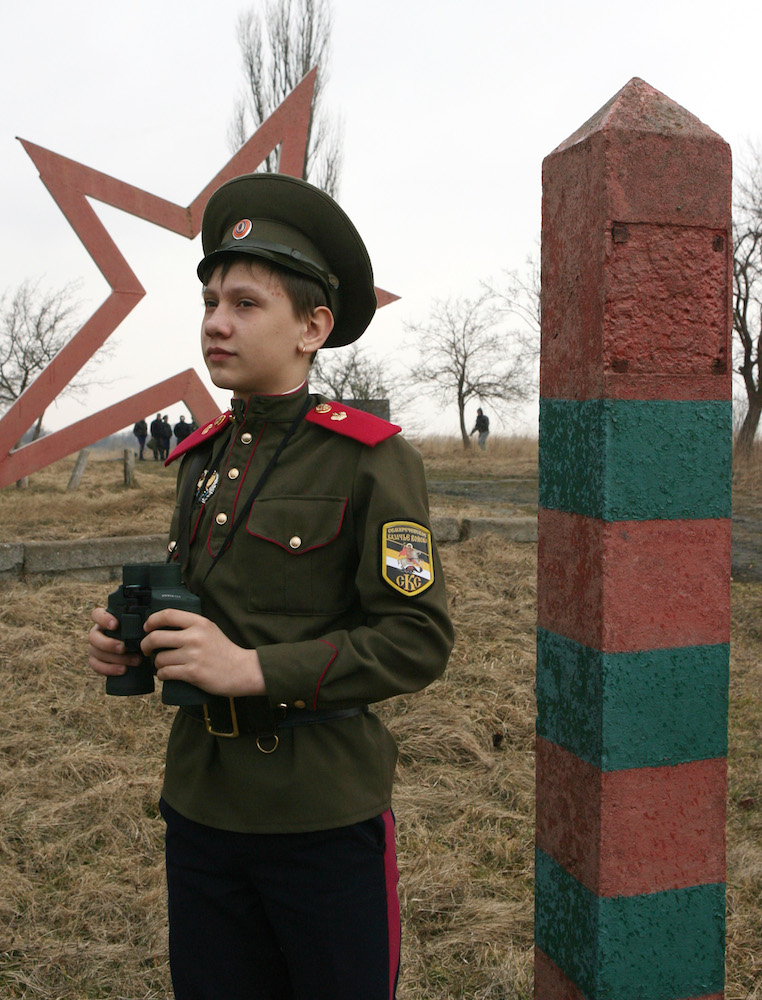
A young Cossack on border patrol in Kaliningrad. Photograph: Igor Zarembo/RIA Novosti
For many historically minded Cossacks, this official recognition was a decisive moment. An interviewee of mine in Sochi, Leonid, who had for many years been a member of an informal historical re-enactment club, said that the Cossacks’ new status as a police auxiliary force had inspired him to register officially. He saw street-patrols and crime-prevention — mostly aimed against non-Russians — as a “real cause” for Cossacks. The monthly salary of about 25,000 roubles (about $700) probably helped too.
Nevertheless, it is important to remember that Cossackdom today is not a unified entity: my Cossack respondents included nationalists, neo-pagans, left-wingers and even those descendants who reject any public manifestation of Cossack — sometimes within one family. For my part, I left the Cossack organisation I joined in 1992 when I realised that I had little in common with the people in full Cossack uniform who visited a “morally inappropriate” beauty pageant in my native city in order to intimidate the organisers and participants and who lectured us on how the west was plotting to conquer Russia using multinational corporations. Not every Cossack supports the activities of quasi-military neo-Cossack groups.
